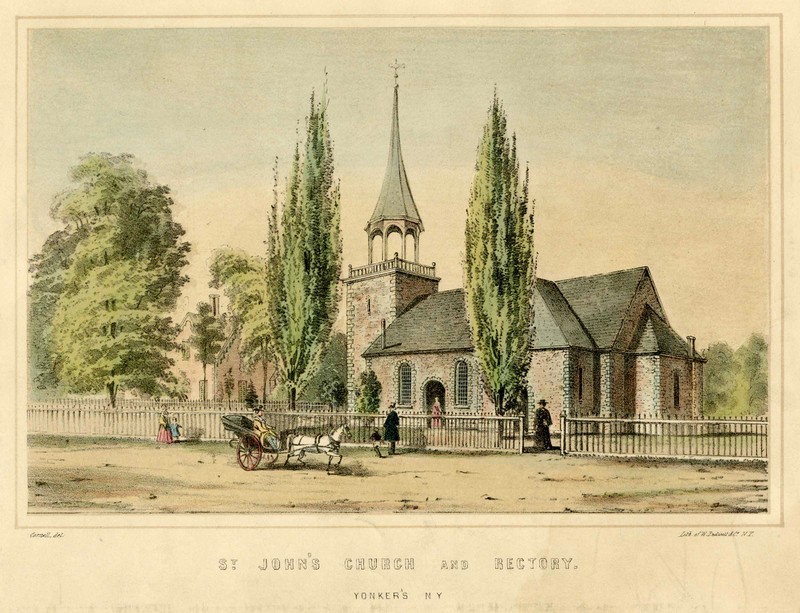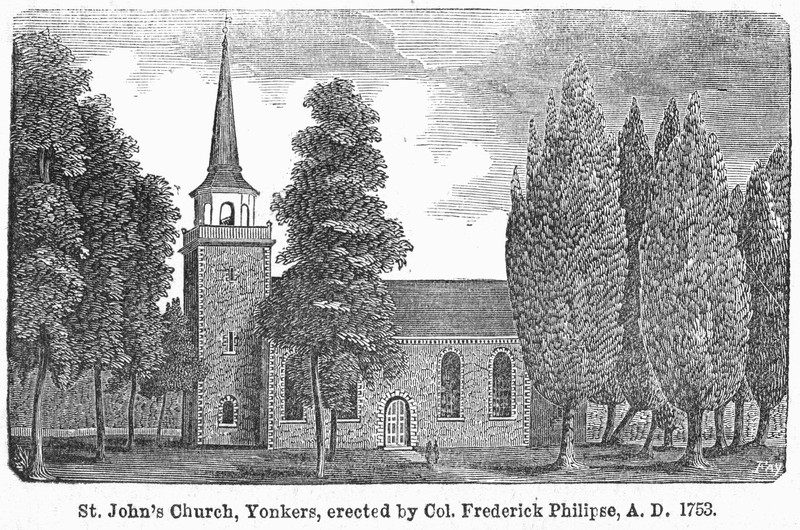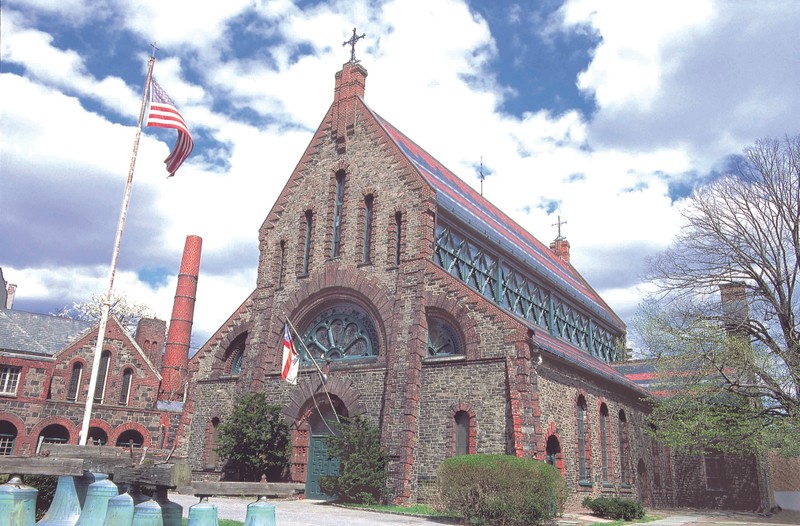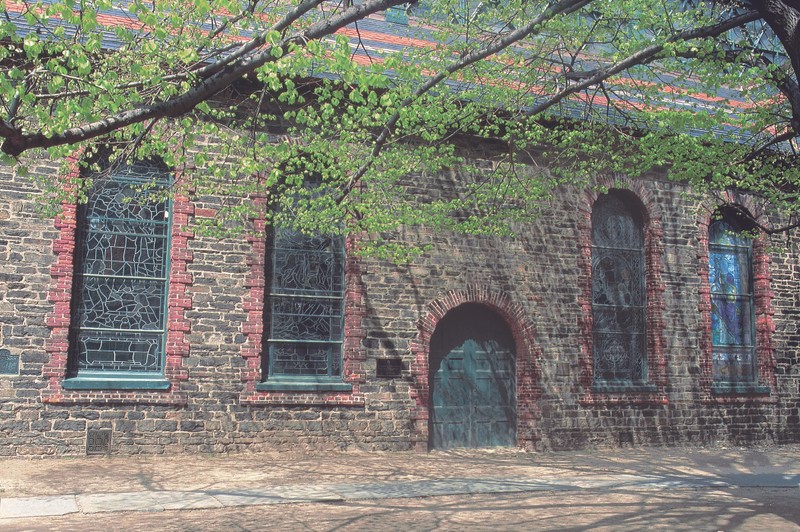St. John's Episcopal Church
Introduction
Text-to-speech Audio
Images
St. John's Episcopal Church in the middle of the 19th century.

St. John's Episcopal Church, circa 1855.

St. John's Episcopal Church.

The south wall of St. John's Episcopal Church is a remnant of the original 1752 church.

Backstory and Context
Text-to-speech Audio
On March 24, 1693, the New York General Assembly established the congregation that is now St. John's Episcopal Church. However, records indicate that the adherents of the Church of England in Yonkers were active with the Anglicans of both Eastchester and Westchester in supporting a minister as early as 1684. During the Colonial period, Yonkers was part of Philipsburg Manor, which was owned by the Philipse family. The congregation at Yonkers did not have its own house of worship until 1752 construction began on church near Philipse Manor Hall. This church was constructed through a bequest of Frederick Philipse II, the lord of Philipsburg Manor who had died the previous year. The church, a stone-and-brick building similar to St. Paul's Episcopal Church in present-day Mount Vernon, was completed in 1753.
The 1752 church was heavily damaged by a fire that took place in May 1791. The church was repaired, and was consecrated under the title of St. John's Church, Philipsburgh, on August 21, 1792. Transepts and a chancel were added to the church in 1849. In 1872, the same year that Yonkers was incorporated as a city, the vestry of St. John's hired architect Edward Tuckerman Porter to design a new church on the same site as the parish's existing house of worship. The church's vestry required Tuckerman to keep several portions of the existing church as part of his design, including the building's south wall that had been built in 1752, the south transept and a portion of the east wall. The new church was completed in 1874. Although the basic style of the building is Gothic, the pre-existing rounded arches on the south wall of the structure meant that the rest of the windows on the new church would not be Gothic. Upon its completion, the finished church was described by the Episcopal Register:
"The design of the present and elegant church approaches the Renaissance, the style of architecture prevalent in England during the reign of George the Second. But the herring-bone course of brick-work, the peculiar arrangement of the coping, the raking buttresses of the facade, not built with weatherings in the Gothic manner, but carried up on the batter, giving an appearance of massiveness and strength, the elaborate brickwork of the doorways, the paneling of the doors, and the great rings used as handles, all carry us back to the days of our grandfathers and clearly indicate the Dutch influence which prevailed at the time the original structure was put up....The entire south wall of the building is retained which was erected in 1752, with its venerable south door and windows; also the south transept and part of the east wall with two of the windows of the old chancel, the old weathervane and bell."
In 1890-1891 several new structures were built on the property of St. John's Episcopal Church. Designed by architect Robert H. Robertson, these buildings included a rectory, chapel, and parish house. The parish house adjoins the west side of the church, the rectory adjoins the south side of the parish house, and the school adjoins the west side of the parish house. About this time the church also built St. John's Ice Water Fountain at the northwest corner of Broadway and Hudson Street. This fountain was designed by Benjamin Silliman and features a bronze plaque produced by Tiffany Glass Company. It was one of the first fountains to be mechanically cooled, as 200 lbs of ice were used to kept its refrigeration coils cool.
St. John's Episcopal Church remains an active place of worship and activity more than 325 years after its founding. Its property, including the church, parish house, rectory and school, was added to the National Register of Historic Places in 1982.
Cite This Entry
Patrick Raftery on behalf of Westchester County Historical Society. "St. John's Episcopal Church." Clio: Your Guide to History. May 21, 2020. Accessed March 14, 2025. https://theclio.com/tour/1529/4
Sources
Bolton, Robert. History of the Protestant Episcopal Church, in the County of Westchester, From its Foundation, A.D. 1693, to A.D. 1853. New York, N.Y.. Stanford & Swords, 1855.
O'Brien, Austin N. National Register of Historic Places Nomination Form: St. John's Episcopal Church. June 1982.
St. John's Church, Getty Square.. Accessed May 20th 2020. http://www.yonkerschurch.org/.
Williams, Gray. Picturing Our Past: National Register Sites in Westchester County.. Elmsford, N.Y.. Westchester County Historical Society, 2003.
Westchester County Historical Society.
Westchester County Historical Society.
Westchester County Historical Society. Photo by Gray Williams.
Westchester County Historical Society. Photo by Gray Williams.

